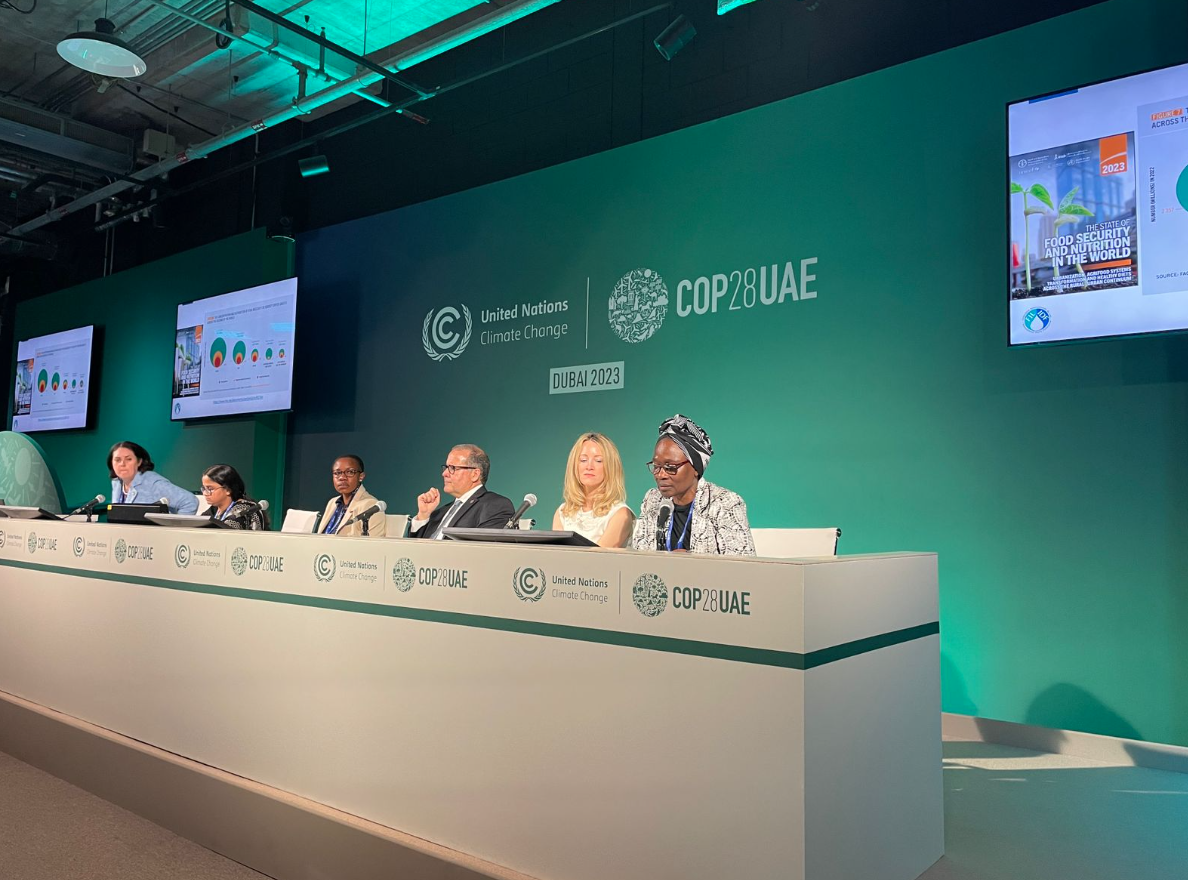
How animal sourced food nourish the world in times of climate change – 5 Dec
Core message
event summary
When it comes to tackling climate change and food security, these global issues require innovative approaches. Especially in developing countries, malnutrition is degrading the health, development, and economic stability and wellness of individuals and communities. People in these communities critically need foods rich in protein, fatty acids, and vitamins. However, currently no country is on track to meet these nutrition goals and eliminate malnutrition and food insecurity.
A solution to increasing nutrition deficits can be through greater production and consumption of eggs, meat and milk. While consuming animals is usually viewed as an opponent to tackling climate change, this session on December 5 discussed “How Animal Source Food Nourishes The World In Times of Climate Change.” The International Dairy Federation (IDF) and the European Dairy Association (EDA) hosted this side event at COP28’s SE Room 9. ILRI’s Director General Representative to Ethiopia and senior nutrition and health scientist, Namukolo Covic, sat on the panel explaining the need for investment in animal source foods in the African continent while Llyod Day, Deputy Director General of the Inter-American Institute for Cooperation on Agriculture (IICA) and Smriti Singh, Postgraduate in Sociology and Management explained the importance of these foods in school lunch systems to bolster nutrition in communities across the world.
Speaker Quotes
-
“There extreme disparity in access and consumption of different kinds of animal source foods across the globe” - Lynnette Newfield
-
“ILRI is working with African Union Commission, and African Union Development Agency to develop food safety guidelines for informal markets as we get 70% of our fresh food from informal markets in Africa” - Namukolo Covic
-
“Only 9/54 African Union Member States have Food Based Dietary Guidelines which is an opportunity of hope because these countries will be developing their guidelines in the context of heightened attention to sustainable food systems transformation, so we have an opportunity to inform the policies and pathways we’re trying to implement, and how we move forward sustainably to address nutrition challenges we face” - Namukolo Covic
-
“Science and evidence needs to be the foundation for any kind of public policy by governments and international organizations” - Lloyd Day
-
“Agriculture is a sector where we can reduce our emissions and sequester carbon, and a lot of that comes from livestock” - Lloyd Day
-
“Meat and dairy are essential parts of health and nutrition of people of all ages” - Smriti Singh
Key Takeaways
-
The panelists agreed that we're in trouble as malnutrition levels are still very high.
-
Specifically, hidden in the vast percentage of people who are hungry in the African continent, is also a micronutrient deficiency.
-
We need to strive for sustainability and synergy to tackle climate change and malnutrition: we can do so by shifting away from thinking of livestock as an isolated agricultural entity and instead see it as part of a regenerative production landscape - with livestock providing environmental benefits in crop-livestock systems.
-
For example, in Ethiopia, livestock are a part of the food systems transformation pathway as livestock have high bioavailability of nutrients.
-
Another example is through investing chicken and egg farmers in poor developing counties to meet micronutrient nutrition needs. Doing so helps with nutrition and gender based economic development as well.
-
For instance, the dairy sector is important in India because it creates livelihoods on the ground level for the small and marginal farmers, and ensures nutritional security for the population across all age groups.
Looking Forward
As one out of eight people depend on livestock and dairy for their livelihoods, it is crucial to invest in more livestock as a source of nutrition, income, and climate resilience. Here are a few ways to do so:
Namukolo Covic mentioned that we need to address GHG emissions and not leave it to chance to decrease emissions. We can do this through creating more productive food systems such as getting cows to produce 10 L of milk instead of 1 L.
Llyod Daly discussed how school feeding in every country has a real impact on child development and growth (physical and cognitive). His proposition was for the World Food Program to help in school feeding programs by developing access to locally sourced animal nutrients such as dairy, beef, pork, chicken and eggs. This would have a profound economic development impact.
Smriti Singh exposed ways to implement sustainable dairying through improving the productivity of the existing herd (by choosing specific feeds).
By aiding farmers in becoming more resilient and increasing their yield, we increase the resilience of their business and incomes, resulting in more people having access to more nutritious foods. Livestock are one of the most crucial ways to meet these economic and nutrition needs as they have high bioavailability levels. Join in advocating for more investment in livestock and more countries to include livestock as part of their food systems transformation pathways.